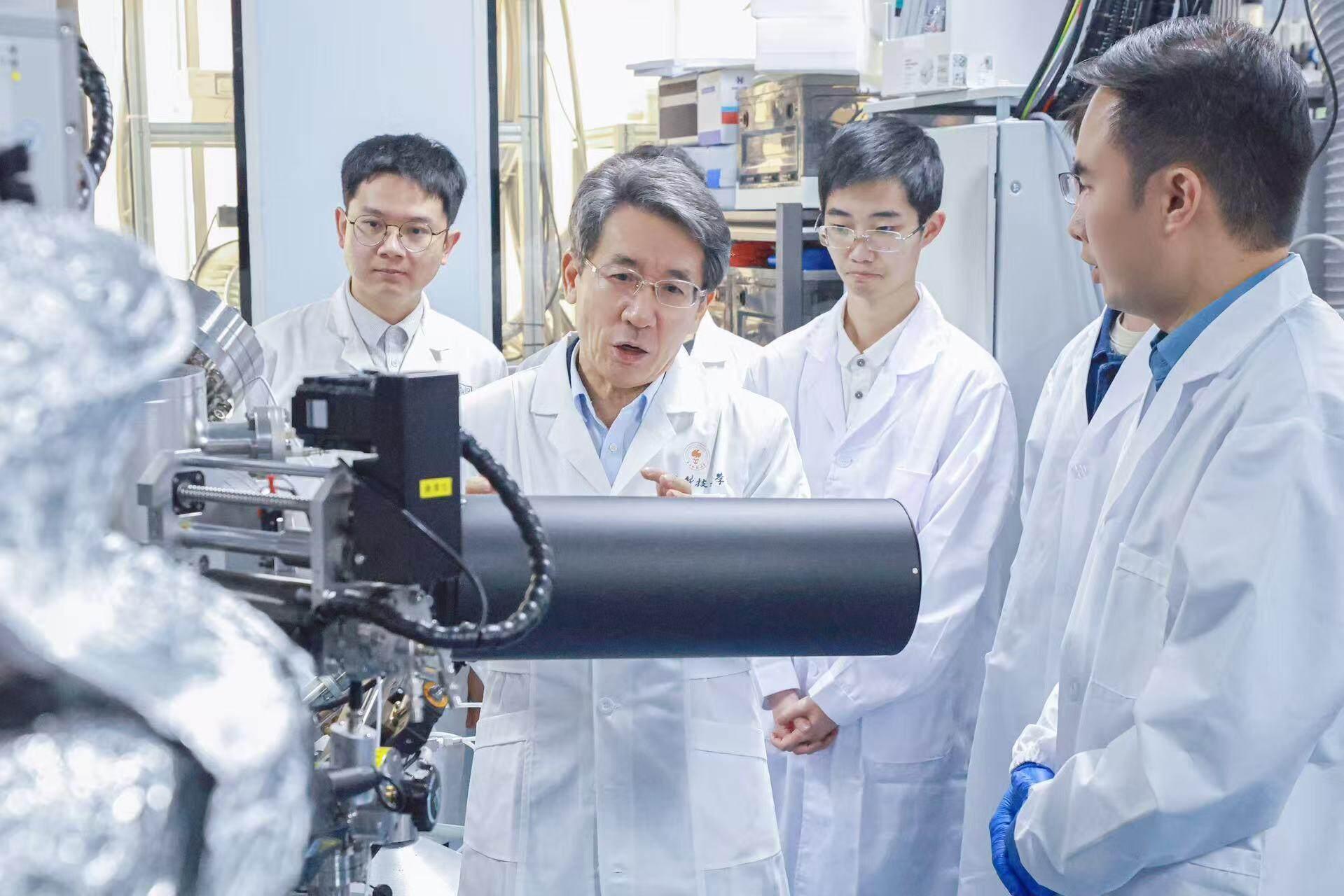
On February 18th, a joint research team led by academician Xue Qikun, a recipient of State Preeminent Science and Technology Award, and consisting of members from the Southern University of Science and Technology, the Quantum Science Center of Guangdong-Hong Kong-Macao Greater Bay Area, and Tsinghua University, published a groundbreaking study online in "Nature". The team reported the first observation of high-temperature superconductivity in nickel oxides under ambient pressure.

This discovery establishes nickel-based materials as the third class of high-temperature superconducting system, following copper-based and iron-based materials, to surpass the 40K "McMillan limit", providing a new breakthrough to unravel the mechanisms of superconductivity.
In recent years, nickel-based superconducting materials have emerged as a promising frontier. In 2019, US researchers first observed superconductivity in nickel-based thin films. In 2023, Chinese scientists achieved superconductivity in the liquid nitrogen temperature range under extremely high pressure. However, achieving high-temperature superconductivity at ambient pressure has remained a global challenge.
To address this, Xue Qikun and 35-year-old associate professor Chen Zhuoyu led a team of young scientists, predominantly in their 30s, in a three-year effort. They independently developed a "gigantic-oxidative atomic-layer-by-layer epitaxy" technique. This method, conducted in an environment with far greater oxidizing power than traditional approaches, employs "atomic riveting" to construct high-quality oxide films just a few nanometers thick on atomically smooth substrates. After thousands of experiments, the team successfully achieved superconductivity at ambient pressure. Xue stated that this breakthrough fully demonstrates China's original competitive capabilities in the frontier field of high-temperature superconductivity, highlights the innovative technical approaches of the young scientist team, and underscores the critical role of domestically developed, controllable research equipment, particularly in the Guangdong-Hong Kong-Macao Greater Bay Area, in supporting cutting-edge scientific innovation.
Notably, a research team from Stanford University in the US almost simultaneously reported similar ambient-pressure superconducting phenomena. The independent experiments from both China and the US serve as mutual validation, providing crucial insights into further analysis of the electron-pairing mechanisms of high-temperature superconductivity and laying a solid foundation for the independent development of superconducting and quantum materials in China.
Source: Lingnan on the Cloud
中国科学家在高温超导领域实现重大突破
由国家最高科学技术奖得主薛其坤院士领衔的南科大、粤港澳大湾区量子科学中心与清华大学联合团队,于2月18日在《自然》线上发表成果,首次在常压下发现镍氧化物的高温超导电性。这一发现使镍基材料成为继铜基、铁基之后,第三类突破40K“麦克米兰极限”的高温超导体系,为破解超导机理提供全新突破口。
近年来,镍基超导材料异军突起:2019年美国首次在镍基薄膜中观测到超导电性;2023年,中国科学家在超大气压条件下实现液氮温区超导。然而,如何摆脱高压限制实现常压高温超导,始终是全球难题。
对此,薛其坤与35岁的陈卓昱副教授率领以90后为代表的年轻科学家团队攻关3年,自主研发“强氧化原子逐层外延”技术,在氧化能力远超传统方法的环境中,通过“原子铆钉术”在原子级平滑基片上构建几纳米厚的高质量氧化物薄膜。经过上千次试验,团队终于在常压下获得超导电性。薛其坤表示,本次科研突破充分展示了我国在高温超导前沿领域的原创竞争能力,体现了年轻科学家团队在技术方法上的开拓创新能力,凸显了以粤港澳大湾区为代表的国产自主可控科研设备对前沿科研创新的支撑能力。
值得注意的是,美国斯坦福大学团队几乎同时报告了类似常压超导现象。中美两组独立实验相互印证,将为深入解析高温超导电子配对机制提供关键线索,也为我国超导及量子材料领域的自主发展奠定坚实基础。
文|记者 沈婷婷
图|受访者供图
译|黄宇洁
英文审校|林佳岱
-
Success of 'Ne Zha 2': powered by Guangdong enterprises
2025-02-18 22:30:42 -
'Ne Zha 2': only non-Hollywood film among top ten in box office
2025-02-18 22:30:42 -
Guangdong to host over 100 key investment promotion events in 2025
2025-02-18 22:30:42 -
Y Talk 98 | China firmly supports the private sector 中国坚定支持民营经济发展
2025-02-19 10:08:20






